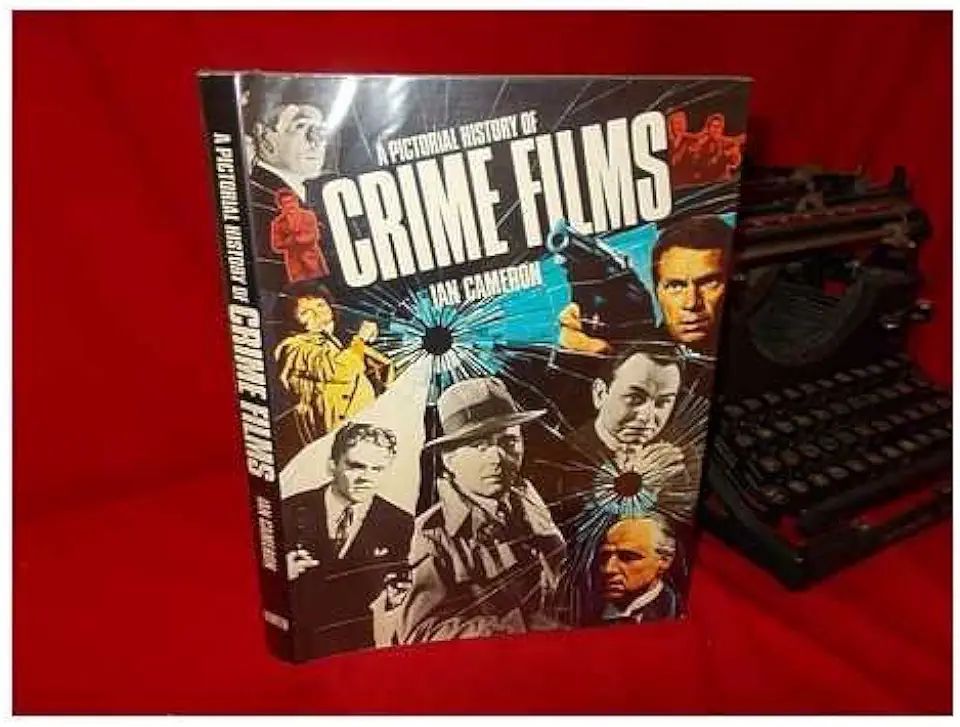
A Pictorial History of Crime Films - Ian Cameron
A Pictorial History of Crime Films: A Comprehensive and Visually Stunning Journey Through the Evolution of Crime Cinema
Introduction: Delving into the Dark Side of Cinema
In the realm of cinema, crime films have captivated audiences for decades, weaving intricate tales of intrigue, suspense, and moral dilemmas. From the silent era to the modern age, these films have explored the darker aspects of human nature, delving into the minds of criminals and the relentless pursuit of justice. "A Pictorial History of Crime Films" by Ian Cameron embarks on a comprehensive journey through the evolution of crime cinema, offering a visually stunning exploration of this captivating genre.
Chapter 1: The Silent Era: Laying the Foundation
The book begins by delving into the early days of crime cinema, showcasing the pioneering efforts of filmmakers during the silent era. From the iconic works of D.W. Griffith and Fritz Lang to the groundbreaking gangster films of the 1920s, this chapter provides a glimpse into the origins of the genre and the establishment of its enduring conventions.
Chapter 2: The Golden Age of Hollywood: Gangsters, Mobsters, and Femme Fatales
The 1930s and 1940s marked the golden age of Hollywood crime films, characterized by the rise of iconic gangster movies and the emergence of legendary stars like James Cagney, Humphrey Bogart, and Lauren Bacall. This chapter delves into the glamorous yet gritty world of organized crime, exploring the stylish aesthetics, memorable characters, and unforgettable performances that defined this era.
Chapter 3: The Post-War Era: Noir, Neo-Noir, and Psychological Thrillers
As the world emerged from the shadows of World War II, crime cinema took a darker turn, giving rise to the film noir genre. This chapter delves into the shadowy corners of human psychology, exploring the moral complexities of crime and the blurred lines between good and evil. From the iconic works of Alfred Hitchcock to the neo-noir masterpieces of the 1970s, this section showcases the evolution of crime cinema into a more introspective and psychologically driven genre.
Chapter 4: The New Hollywood: Gritty Realism and Social Commentary
The 1970s and 1980s witnessed a significant shift in crime cinema, with a focus on gritty realism and social commentary. This chapter explores the rise of independent filmmakers and the emergence of powerful crime dramas that tackled issues of race, class, and corruption. From the groundbreaking works of Martin Scorsese and Francis Ford Coppola to the influential films of Spike Lee and the Coen Brothers, this section highlights the genre's ability to provoke thought and spark societal change.
Chapter 5: The Modern Era: Global Perspectives and Technological Advancements
In the modern era, crime cinema has expanded beyond Hollywood, showcasing diverse perspectives from around the world. This chapter explores the rise of international crime films, including influential works from Asia, Europe, and Latin America. It also delves into the impact of technological advancements, such as digital filmmaking and CGI, on the genre's visual language and storytelling techniques.
Conclusion: A Timeless Legacy and Enduring Appeal
"A Pictorial History of Crime Films" concludes by reflecting on the enduring legacy of the genre and its continued ability to captivate audiences. From the silent era to the modern age, crime films have provided a platform for exploring the complexities of human nature, the pursuit of justice, and the moral dilemmas that arise in a world of crime and deception. This book serves as a comprehensive and visually stunning tribute to the genre, offering a must-have addition to the collection of any film enthusiast or cinephile.